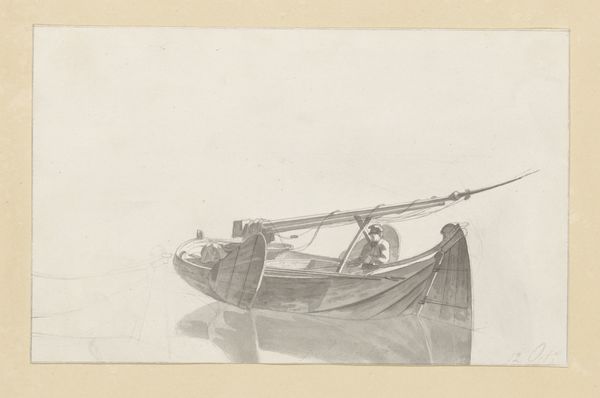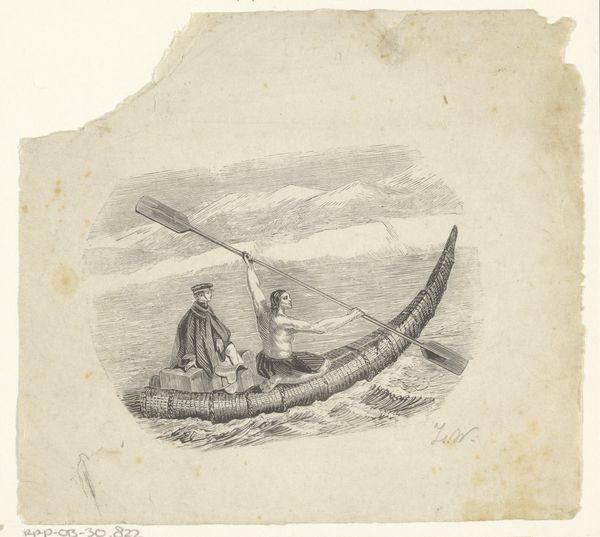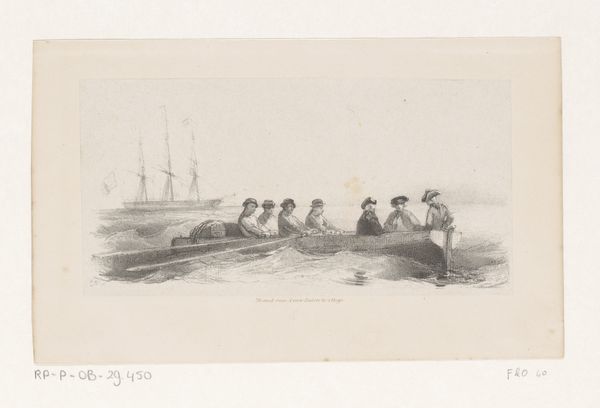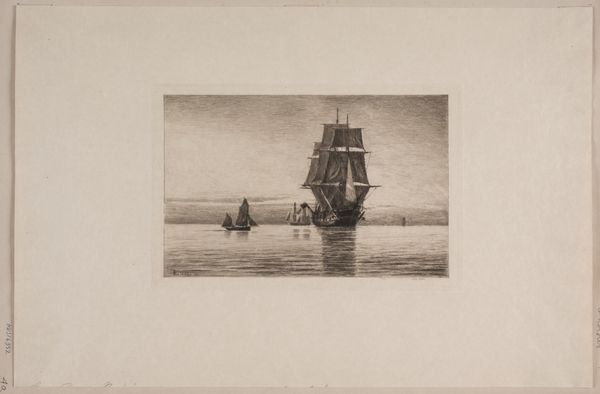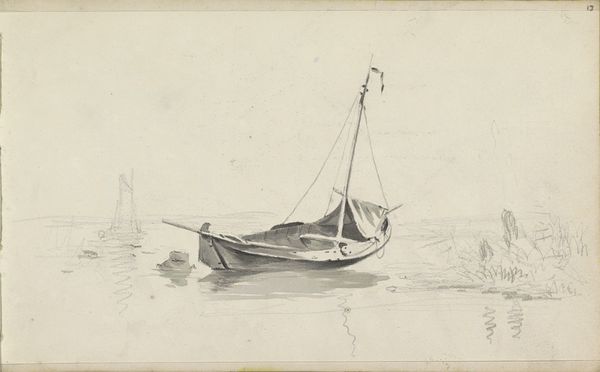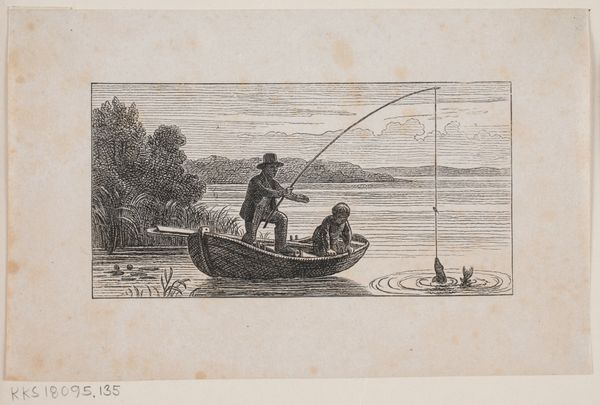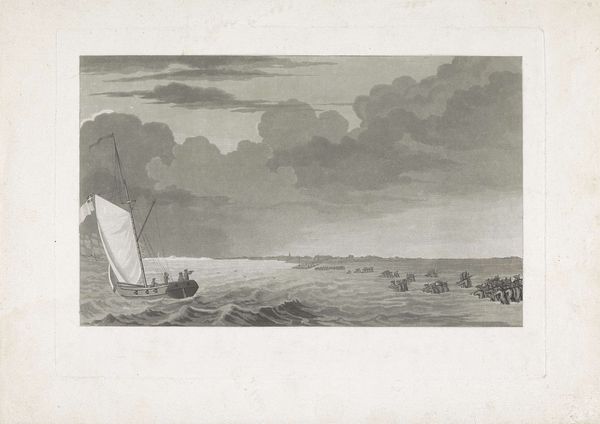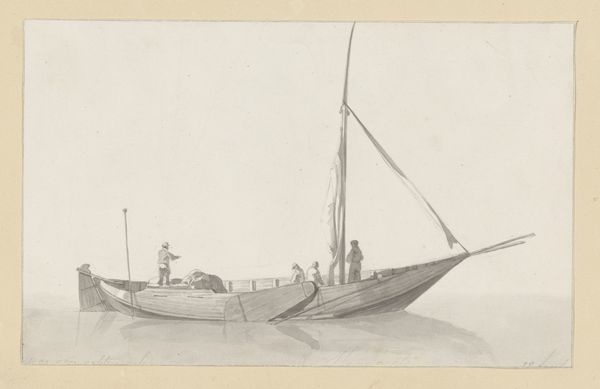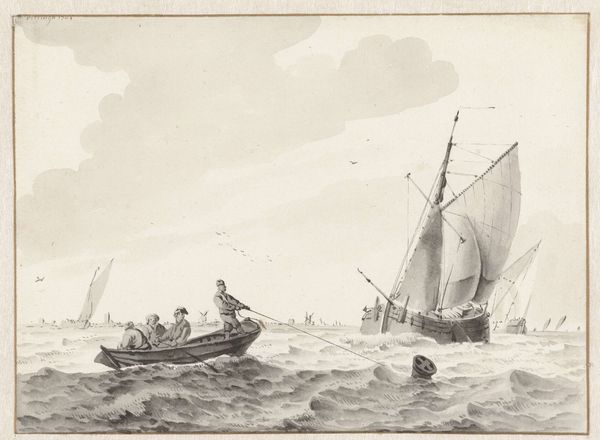
Dimensions: 205 × 350 mm
Copyright: Public Domain
Curator: The work before us is "The Bark," a pen, ink, and wash drawing on paper created between 1771 and 1780, now residing here at the Art Institute of Chicago, by Pierre Ozanne. I'm immediately struck by the subdued tonality and expansive sky, setting an almost melancholy mood, what do you make of this first impression? Editor: It evokes a complex reaction; a somber beauty clashes with what looks like an encounter fraught with power imbalances. That large sailing ship looming on the horizon tells a clear colonial story when juxtaposed with the indigenous figures. Curator: Indeed. Ozanne’s mastery is apparent in the textures rendered purely through line work. Notice how varied the washes are depicting depth. How the hatching captures a rolling ocean, juxtaposed with the more simple representation of human figures. Editor: True. And the linear precision applied to the ship intensifies its dominating presence in contrast with the seemingly vulnerable boat and figures. There is such visible attention given to the material culture of colonial ships. This contrast establishes clear signs of dominance and what is at stake for those in the small bark. Curator: It is certainly a work defined by contrasts. Notice the light reflecting on the distant waves—mimicking the illuminated sails—while the foreground holds darker shadows, drawing us in. It's a stunning, formal device. Editor: Those dark foreground shadows, though. I can't help but see that as Ozanne signaling a type of visual warning—an impending darkness brought by colonial expansion represented on the horizon. It brings the legacy of Romanticism as an aesthetic and political project into sharp focus. Curator: Romanticism was known for that kind of ambiguity. Ozanne is using that sensibility to amplify emotional response to pure pictorial strategies. Editor: Absolutely, and perhaps this reading can enable a productive reflection today—connecting that history with enduring questions of representation, power, and perspective, which are perpetually urgent. Curator: It seems a study in lines—connecting material form and broader historical implications—reveals ever deeper relationships within this work, doesn't it? Editor: It certainly does. This artwork teaches us that form is indeed always entwined with social-political meanings.
Comments
No comments
Be the first to comment and join the conversation on the ultimate creative platform.
